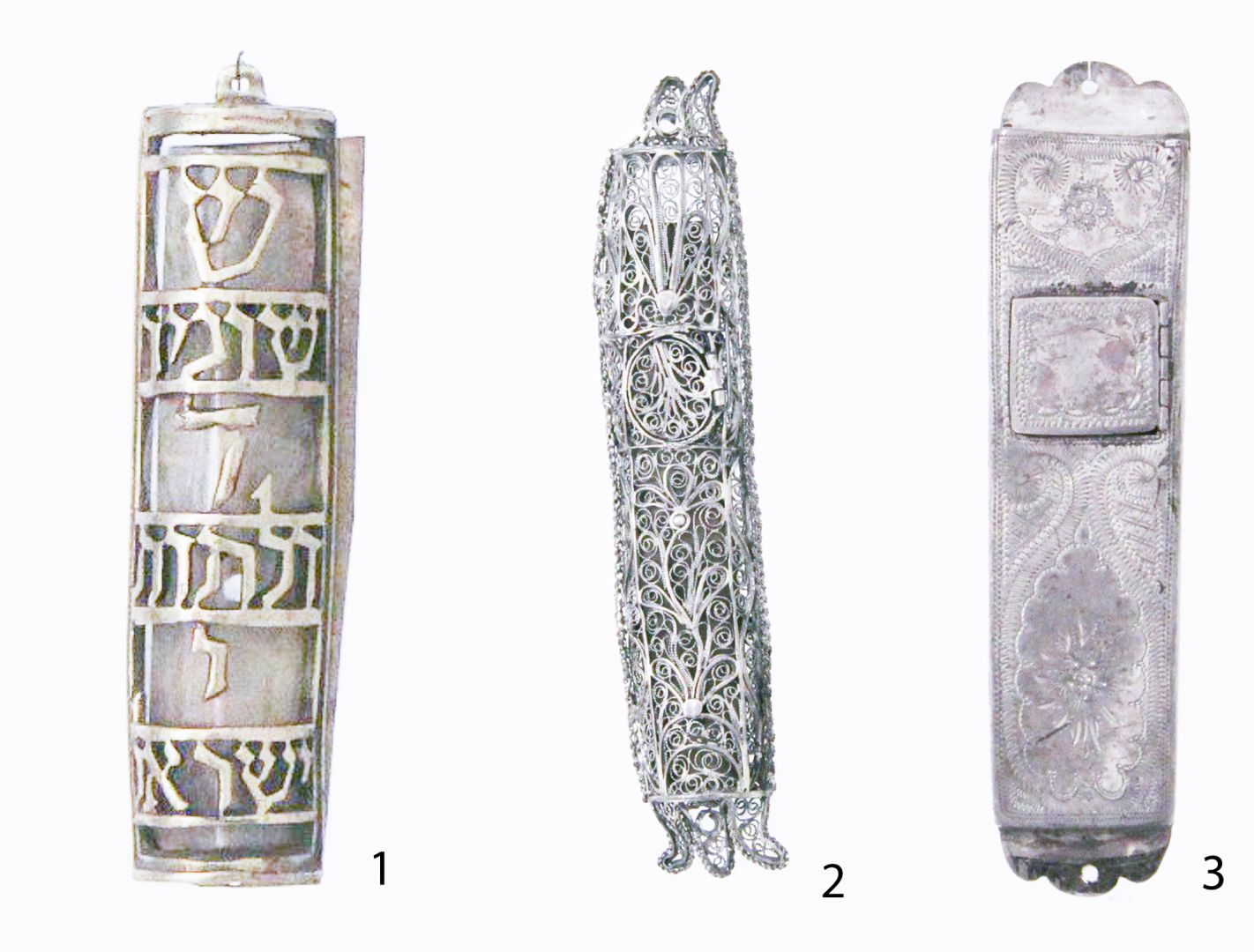1. Hall - 5. view
Mezuzah case
1.
Mezuzah case, Jerusalem, 1924. The yellow brass mezuzah case was made at the Bezalel Academy, founded to initiate Jewish national art. The art of the Bezalel Academy is famous for its ornamented Hebrew texts. The grid of the mezuzah case is created out of the ’Somer dalté Israel’ (the guard of God’s door) which abbreviation (SDI) is also Saddai name of God.
2.
Mezuzah case, Óbuda, 1848. The mezuzah case was made by the Jewish craftsman from Óbuda, from silver wire, with swaying and filigree-work, which was the speciality of the Jewish craft from Óbuda. On the feudalistic Hungary Jews could not be guildsmen, thus they were excluded from most of the crafts: they could only do this job on two lordships with special, individual permission: in Bratislava-Vártelek and Óbuda. Salamon BÖHM was the member of the Jewish community of Óbuda.
3.
Mezuzah case, silver. In the Jewish household a small parchment scroll with some handwritten verses of the Holy Text has to be affixed to the right doorpost, in a small case. The location reminds us of the exodus from Egypt. According to the Book of Exodus before the tenth plague and the death of the first borns, the doorposts of the Jewish households were signed by the blood of the lambs eaten for dinner. And those houses were safe from the plagues. The mezuzah on the doorposts of Jewish homes reminds us of this story. Religious rules we can only find for the text, they are equally rigid as for the writing of the Torah. The case can be basically made of everything that is apt to protect the scroll from aging and becoming useless.
